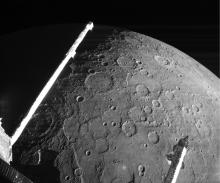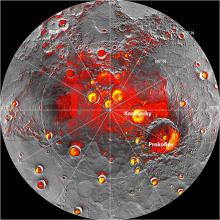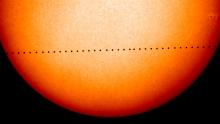Listen to today's episode of StarDate on the web the same day it airs in high-quality streaming audio without any extra ads or announcements. Choose a $8 one-month pass, or listen every day for a year for just $30.
You are here
Mercury and Regulus
Pull out your binoculars and make sure you have a clear western horizon after sunset the next few nights. You’ll need them to see an amazing close encounter between the planet Mercury and the star Regulus, the heart of the lion. This evening, they’ll pass just one-tenth of a degree from each other — less than the width of a pencil held at arm’s length.
Regulus has frequent encounters with solar system bodies because it’s almost on top of the ecliptic, which is the Sun’s path across the sky.
The Moon and planets stay close to the ecliptic as well, so they periodically pass close to Regulus. Just this month, the list of close visitors has included Mars, Venus, and the Moon.
Mercury is the least frequent caller. It’s the closest planet to the Sun, so it never appears far from the Sun in our sky. That means Mercury has to wait for Regulus to come to it, shortly before sunrise or shortly after sunset.
Mercury has been creeping up on Regulus for a few nights. And it will remain close for a few more nights as it pulls away.
Look for Mercury and Regulus beginning about a half-hour after sunset, almost due west. They’re so low in the sky that any trees or buildings along your horizon will hide them from view. Mercury is the brighter of the two targets. The view is better from the southern United States because the ecliptic stands at a slightly more favorable angle — a better view of a beautiful encounter.
Script by Damond Benningfield





